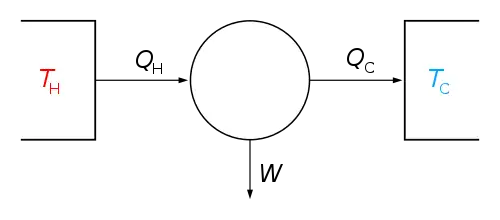Pseudo Stirling cycle
The pseudo Stirling cycle, also known as the adiabatic Stirling cycle, is a thermodynamic cycle with an adiabatic working volume and isothermal heater and cooler, in contrast to the ideal Stirling cycle with an isothermal working space.[1] The working fluid has no bearing on the maximum thermal efficiencies of the pseudo Stirling cycle.[2]
| Thermodynamics |
|---|
 |
|
Practical Stirling engines usually use a adiabatic Stirling cycle as the ideal Stirling cycle can not be practically implemented. Nomenclature (practical engines and ideal cycle are both named Stirling)[3] and lack in specificity (omitting ideal or adiabatic Stirling cycle) can cause confusion.
History
The pseudo Stirling cycle was designed to address predictive shortcomings[2] in the ideal isothermal Stirling cycle. Specifically, the ideal cycle does not give usable figures or criteria for judging the performance of real-world Stirling engines.
See also
References
- "Brief History of Stirling Machines" (PDF). Global Cooling. Archived from the original (PDF) on 10 April 2008. Retrieved 18 May 2008.
- Reader, G. T. (1978). "The Pseudo Stirling cycle - A suitable performance criterion". Intersociety Energy Conversion Engineering Conference, 13th, San Diego, Calif., August 20–25, 1978, Proceedings, Vol. 3. Society of Automotive Engineers, Inc. pp. 1763–1770. Bibcode:1978iece.conf.1763R.
- https://sgp.fas.org/othergov/doe/lanl/pubs/00326875.pdf
External links
- Abstract of "The Pseudo Stirling cycle - A suitable performance criterion"
- Brief History of Stirling Machines p. 4 and on